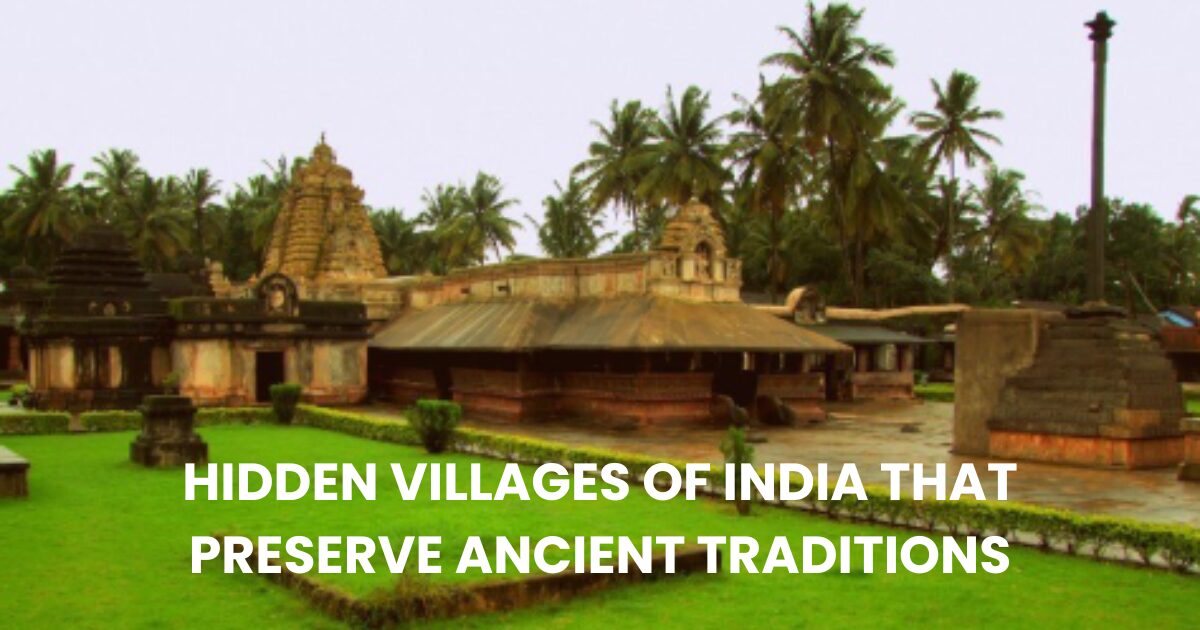
India is a land of vibrant cultures, ancient wisdom, and untold stories. While cities evolve rapidly, tucked away in its diverse landscapes are hidden villages of India that preserve ancient traditions. These offbeat gems keep the heart of India beating through their timeless rituals, crafts, and community life. In this guide, we explore some of the most fascinating Indian villages where heritage lives on.
If you crave authenticity and meaningful experiences, these villages offer an unmatched connection to India’s roots. Unlike popular tourist spots, these places provide:
Whether you’re a history buff, traveler, or cultural enthusiast, these villages are perfect for offbeat exploration.
Nestled in the Eastern Himalayas, Ziro is home to the Apatani tribe, known for sustainable farming and facial tattoo traditions. Women once adorned themselves with nose plugs and tattoos, a practice rooted in protecting community identity.
Best Time to Visit: March to October
Dubbed “Asia’s cleanest village,” Mawlynnong showcases eco-conscious living. The Khasi tribe here follows a matrilineal system where property and family names pass through the women.
Best Time to Visit: September to May
Banavasi is one of the oldest towns in South India, dating back to the 4th century. Set by the Varada River, it’s a center of Sanskrit learning and home to Kadamba architecture.
Best Time to Visit: November to February
Located in the white desert of Kutch, Hodka is a vibrant village showcasing the traditional lifestyle of the Meghwal community. Their unique embroidery, mirror work, and leathercraft attract cultural tourists and artisans alike.
Best Time to Visit: October to March
The world’s largest river island, Majuli is a spiritual and cultural hub in the Brahmaputra River. It is home to neo-Vaishnavite monasteries known as Satras, which preserve ancient dance, drama, and music traditions.
Best Time to Visit: October to March
Lachen offers breathtaking views of the Himalayas and a deep connection with Tibetan-Buddhist culture. The Lachenpas, its indigenous people, have preserved age-old customs in isolation.
Best Time to Visit: March to June, September to December
These hidden villages of India that preserve ancient traditions are more than picturesque getaways. They represent living history, resisting the tide of urbanization. By supporting and visiting these communities, we help sustain traditions that are at risk of fading.
They also highlight how tradition and sustainability can go hand in hand. From bamboo architecture to eco-friendly rituals, there’s much modern society can learn.
India’s soul lives in its villages, especially those quietly preserving customs that shaped civilization. Whether it’s the tribal tattoos of Ziro or the spiritual dances of Majuli, these traditions offer a rich tapestry of stories, values, and ways of life.
So the next time you plan a trip, go beyond the guidebooks. Choose to visit the hidden villages of India that preserve ancient traditions — and take home more than just memories.
©Famous India Blog. All rights reserved.
Creativity By Needinfotech